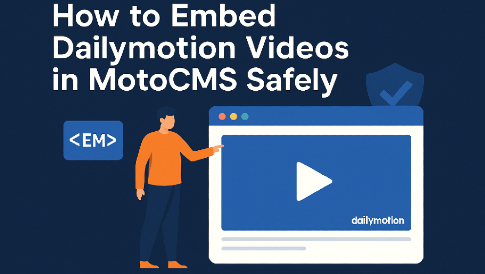How To Develop Data Loss Prevention Strategy For Your Company
In the digital age, data lies at the core of everything you do, and safeguarding it is not just important—it’s imperative. A breach could spell disaster whether it involves customer data, internal secrets, or everyday business communications. Crafting a foolproof data loss prevention (DLP) strategy is no longer optional; it’s critical for protecting your company’s reputation, financial health, and prospects.
So, are you feeling overwhelmed by the idea of setting up a DLP program? Don’t sweat it. With the right mindset, understanding potential risks, and the right DLP tools at your disposal, you can create a formidable barrier against data threats. This guide will walk you through devising a DLP strategy that secures your data and shields your business.
Why Understanding Your Data Is Key
The first step in protecting your data is knowing exactly what you’re dealing with. Data classification is where it all starts. Think of it as sorting your data into different buckets based on how important or sensitive it is. For example, customer details and big company secrets should go into the “high priority” bucket with extra layers of protection.

When you’ve properly classified your data, it’s easier to focus your security efforts on where they’re needed most. On the flip side, if you don’t get the classification right, you might end up leaving the important stuff exposed.
According to experts at NEXT, it’s important to keep your data classifications up to date as your business grows and evolves. This way, new data gets the protection it needs, and you’re not wasting time and resources on information that’s no longer critical.
Strengthening Access Controls
Who gets to see your data is a big deal. Setting up role-based access control (RBAC) is a good place to start. Basically, this means people only have access to what they need to do their jobs—nothing more, nothing less.
Want to take things up a notch? Add multi-factor authentication (MFA) into the mix for your most sensitive data. MFA is like a security double-check, ensuring that your data stays safe even if someone’s password gets swiped.
Setting up access controls isn’t a ‘set it and forget it’ task. You’ll need to regularly update permissions as people change roles or leave the company. This way, only the right folks can access your data, keeping everything secure.
Making Encryption Your Best Friend
Encryption may often be tossed around as a tech buzzword, but its role in data protection is undeniable. Encrypting your data renders it indecipherable to anyone without the decryption key, providing a robust line of defense. Your data loss prevention strategy should include encryption protocols for data at rest (stored data) and in transit (data being transmitted).
Encrypting stored data safeguards everything on your servers, databases, and even on employee devices. Meanwhile, encrypting data in transit protects it as it travels across networks from potential intercepts. Always use strong, modern encryption algorithms and frequently update your data encryption keys to maintain solid security.
Ensuring Compliance With Data Protection Laws
Adhering to data protection laws is more than meeting regulatory standards—it’s an integral part of your data loss prevention strategy. Failure to comply can result in hefty fines and tarnish your company’s reputation.
Stay current with regulations like the General Data Protection Regulation (GDPR) or the Health Insurance Portability and Accountability Act (HIPAA). Regular audits ensure your strategies align with these laws, safeguarding your business and customer data.
Monitoring Data Activity
Consider monitoring your data like having a vigilant security guard on duty 24/7. Effective monitoring within your data loss prevention strategy can preemptively identify and mitigate potential security incidents.
Deploy DLP software with robust monitoring capabilities to oversee data access and usage, quickly identifying any unusual activity or unauthorized access attempts. These systems can alert you to potential risks, allowing you to act swiftly. Regular analysis of monitoring data is vital for spotting trends and vulnerabilities, enabling you to refine your data loss prevention solution continually.
Developing an Incident Response Plan

Your plan should lay out the steps for determining the source of the breach, containing it, and notifying anyone affected. It should also include how to recover the lost data and get your business back up and running as quickly as possible.
Test and update your incident response plan regularly. This will help you find any weak spots and ensure that your team knows exactly what to do if something goes wrong.
Getting Your Team Onboard With Security
Simple human errors can undermine the most sophisticated DLP solutions, making employee training in data security best practices crucial. Training should empower employees to recognize potential cybersecurity threats, such as phishing attempts, and handle sensitive information securely.
Incorporate these topics into regular training sessions, making security a core aspect of your corporate culture. This will encourage employees to actively engage in your data protection strategy. Continual training refreshers are necessary to keep your team updated on the latest threats and best practices, thus bolstering your overall security posture.
Continuously Enhancing Your DLP Strategy
Data security demands constant vigilance and adaptation. Regularly reevaluate and enhance your DLP strategy to tackle new challenges and incorporate cutting-edge solutions. Staying informed about emerging threats and technological advancements can significantly boost your defenses.
Engage with industry experts and conduct frequent risk assessments to gather insights that strengthen your strategy, ensuring your data protection measures stand firm against evolving threats.
Wrap-Up
Building an effective DLP strategy involves more than just deploying the right tools; it requires a comprehensive approach that includes everything from data classification to compliance, monitoring, and employee training. By adhering to the guidelines provided in this guide, you can develop a dynamic defense against data breaches, ensuring your business remains secure in an increasingly digital world. Remember, a successful data loss prevention strategy is dynamic and must evolve continually to counter the ever-changing threats of the digital age effectively.




Leave a Reply